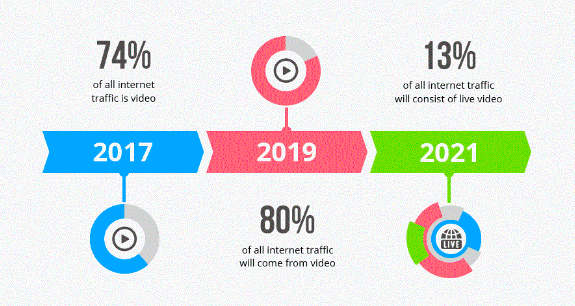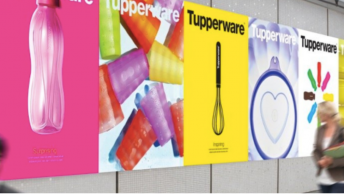Are you looking to build a digital brand that truly thrives? Here are the branding tools to help you build a digital brand through effective content marketing.
Research Is Everything

Every new brand has to go through the hectic beginning stages. While the goal of any new brand is to make their target audience aware of their brand identity, products, and services, a lot of work has to be done to determine all of these things.
It takes extensive work to create a brand identity, decide on and create products, or offer services. Discovering the right target audience and creating a content marketing strategy that caters to them also takes work.
All of this raises a lot of questions, but how does a new brand answer these questions? The answer is with research. Research needs to be done into the following areas at a minimum for a digital brand to have success:
- Brand Industry
- Target Audience
- Area of Establishment
- Customer base
- Brand Expectations
- Quality of products
- Quality of services
- Rules or regulations
With thorough research and a handle on some essential branding tools, a new brand can be well on its way.
Branding Tools to Help Build your Digital Brand
Research is only useful when it is paired with a concise strategy that involves taking clear and decisive actions. Here are some branding tools that can help take your content marketing to the next level.
1. Make Use of Audio Branding
Audio or sonic branding allows companies to have a unique signature sound attached to their name. This allows consumers to recognize a brand by ear, without even seeing it. However, it can be a difficult tool to use effectively. When choosing the sound for your brand, ask yourself these questions:
- What type of entity is your brand?
- What industry will the sound need to cater to?
- What’s the tone of the sound?
- Do you want to use a sound with lyrics?
- If so, what do you want the lyrics to say?
- What sound will appeal to your target audience?
- Is your sound copyrighted?
- Will customers be drawn in by this?
- Does it stand out?
There are numerous complexities when it comes to audio branding. Choosing a sound that is out of date may send the message that your brand is obsolete. If you choose one that is offensive to a group of people, it could potentially alienate them or cause a scandal. Also, depending on your brand, a jingle may not even be appropriate.
However, many brands use audio branding to their advantage. These include McDonald’s, MGM, NBC, 20th Century Fox, and Yahoo.
If used correctly, when consumers hear things that even sound like your audio branding, they will think of your brand. It can be a powerful way to keep your brand in people’s minds.
2. The Power of Video Branding
Video branding is one of the most popular branding tools for a reason. It accommodates both audio and visual content, and visual content is one of the most powerful types of digital marketing media. More than 500 million hours of videos are watched on YouTube daily and 72 hours of video are uploaded to YouTube every 60 seconds. In fact, over one-third of all online activity is people watching videos. It’s no mystery why brands want in on that action. The popularity of online video is only expected to grow.
Video content can have many goals and purposes when it comes to building a digital brand. These include:
- Showcasing products and services
- Conveying brand values
- Communicating with customers
- Adding value in the form of tutorials and informational content
- Capturing a more diverse audience
Video branding includes both traditional TV ads and web media, like YouTube videos.
SEE ALSO: A Digital Branding Guide to Starting Out on YouTube
3. Visual Branding
Visual branding is an important part of any digital branding strategy. It includes logo design, poster designs, pamphlets, and all other visual-textual elements that make a brand identifiable to customers. These things are often the first impression people get of your brand.
Therefore, eye-catching visuals can do wonders for a brand’s content marketing strategy. A good example of this is the big yellow “M” which has become synonymous with McDonald’s. In fact, when many people see a yellow “M,” they automatically associate it with the brand.
Logo and slogan are key elements to creating the identity of a brand. They need to be strong, unique and make a striking impact.
4. Content Marketing
Content marketing encompasses everything that a digital brand uses to express its identity and goals. This includes text, video, audio, and all other kinds of visual content. Everything that you see or hear about a brand is its content. Everything from TV ads to internet ads, to the content posted by brands on social media accounts like Instagram and Twitter, is a part of content marketing.
SEE ALSO: Getting Creative with Your Instagram Content
When properly researched, constructed, and used, content marketing is what makes potential customers aware of a brand and current customers stay engaged with it and in favor of it.
5. Brand Activation
While it is possible for a digital brand to exist solely on the web through an online store and web marketing content, going to live events and interacting with customers and fans face-to-face is important. These opportunities can help customers connect with your brand in a real-world way. They can be used to answer questions, share information, and promote your products, services, and brand.
Examples of activations include:
- Branded merch available outside concerts and live events
- Book expos
- Food stalls at college events
- Services’ stalls at corporate events
You also might even want to host entire independent events dedicated to your brand.
SEE ALSO: 5 Digital Branding Ideas for Live Events
6. Word of Mouth

A brand needs buzz to succeed. This means that a lot of people need to talk positively about it and spread the word. Branding by word of mouth is considered to be one of the best and most useful branding tools. This is because it is considered highly credible and it costs a brand almost nothing.
It is hard to initiate because consumers are rarely excited about little-known brands, and it requires that consumers make the choice to advocate and promote a brand. However, if all of the other steps are taken, the brand awareness that comes by word of mouth will be cultivated naturally.
SEE ALSO: 7 Proven Ways to Build Brand Awareness
How to Establish a Digital Brand
Ultimately, establishing a digital brand is a complex process which involves a lot of research, planning, and hard work. It involves all sorts of content, including visual, audio, textual, and video, and dedication to consistency. Before you can market a brand, you must create it in the first place.
There are many questions to answer and steps to take, but keeping these digital branding tools in mind can help.
What kind of content do you think serves a brand best? Comment below…












